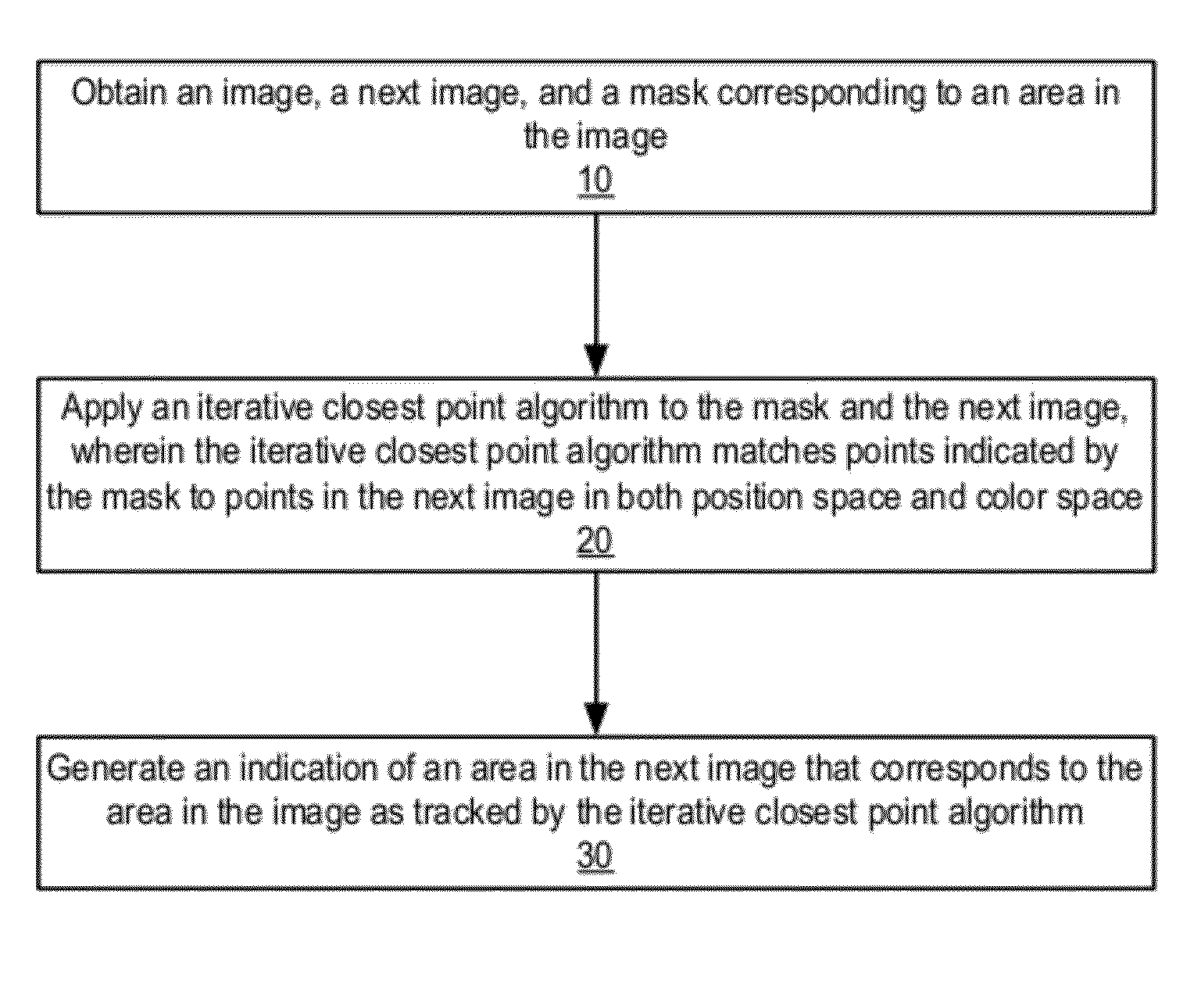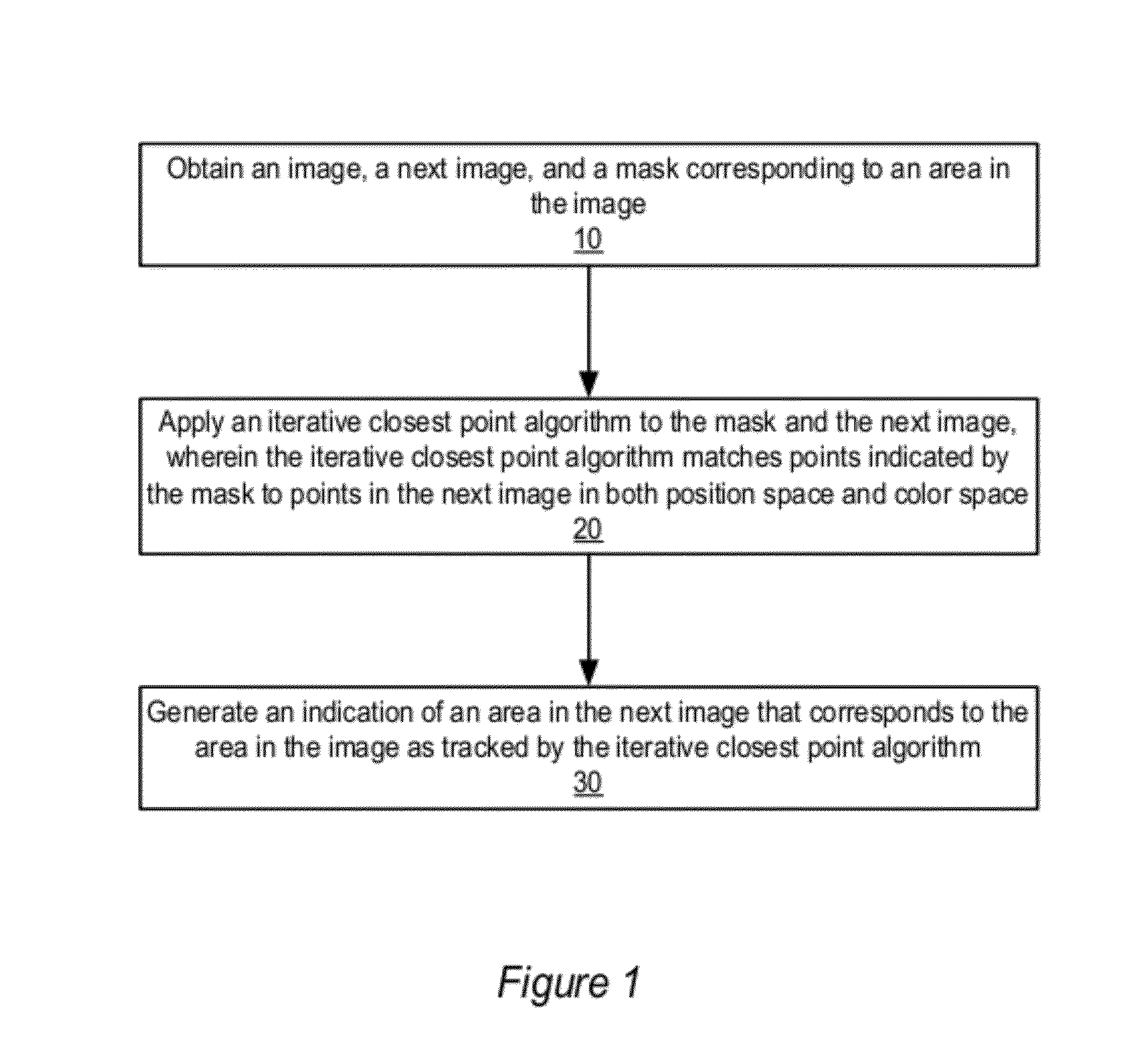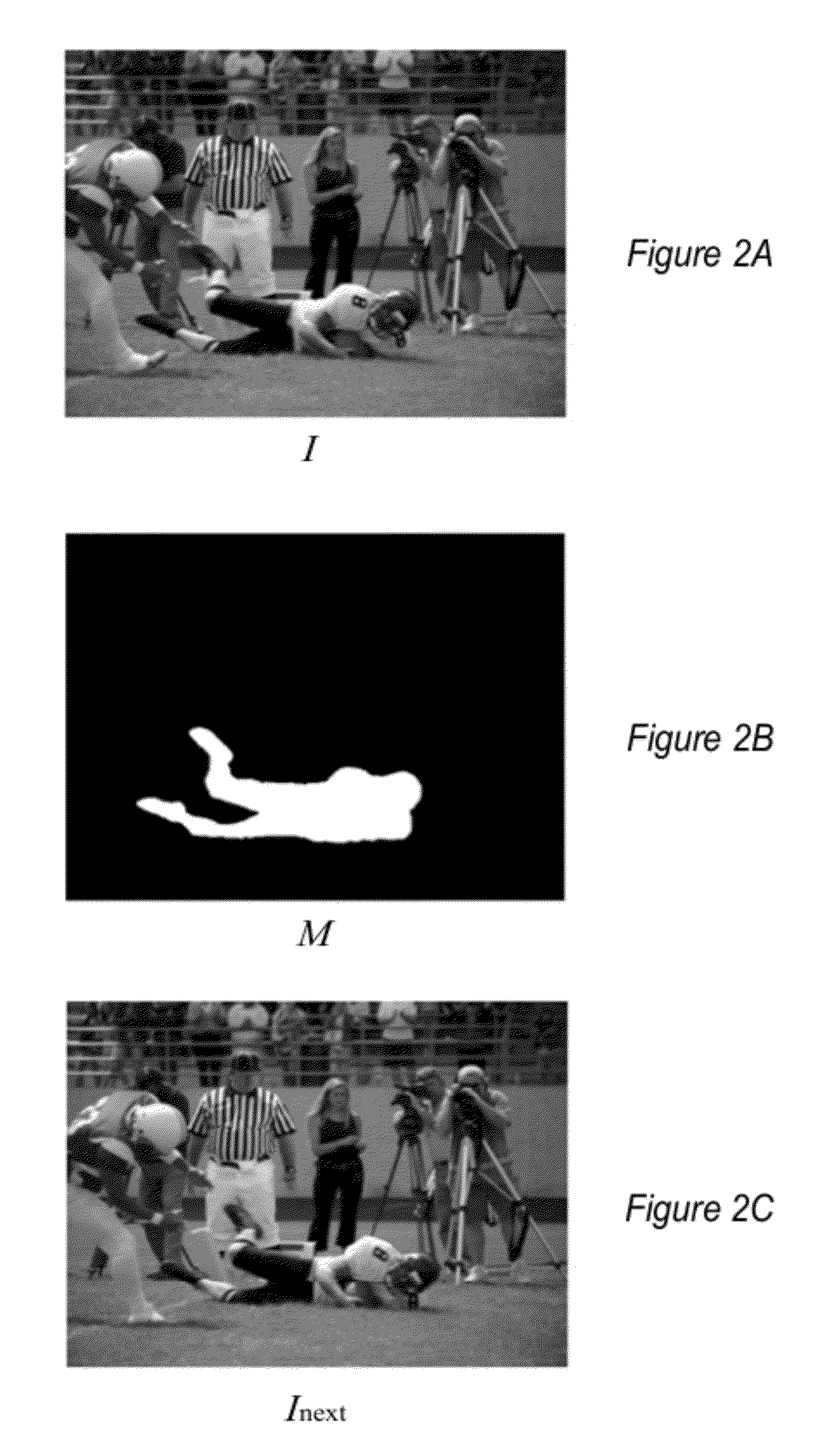Methods and apparatus for robust rigid and non-rigid motion tracking
a non-rigid and rigid technology, applied in the field of methods and apparatus for robust rigid and non-rigid motion tracking, can solve the problems of not having enough distinctiveness, not having enough trackable feature points, and objects/areas that the user can't identify
- Summary
- Abstract
- Description
- Claims
- Application Information
AI Technical Summary
Benefits of technology
Problems solved by technology
Method used
Image
Examples
example implementations
[0171]The rigid, non-rigid, and group motion tracking algorithms described herein, alone or in combination with one or more others of the motion tracking algorithms, may be performed by a motion tracking module implemented by program instructions stored in a computer-readable storage medium and executable by one or more processors (e.g., one or more CPUs and / or GPUs). FIG. 11 illustrates an example embodiment of a motion tracking module that may implement one or more of the above-described methods. The one or more motion tracking algorithms may be implemented as submodules of the motion tracking module 600. Some embodiments of the motion tracking module 600 may be implemented, for example, as a plug-in for image processing or video processing tools or applications. Other embodiments may be otherwise implemented, for example as a stand-alone program or utility, or as a library function.
[0172]Some embodiments of motion tracking module 600 may implement an embodiment of the rigid motio...
PUM
 Login to View More
Login to View More Abstract
Description
Claims
Application Information
 Login to View More
Login to View More - R&D
- Intellectual Property
- Life Sciences
- Materials
- Tech Scout
- Unparalleled Data Quality
- Higher Quality Content
- 60% Fewer Hallucinations
Browse by: Latest US Patents, China's latest patents, Technical Efficacy Thesaurus, Application Domain, Technology Topic, Popular Technical Reports.
© 2025 PatSnap. All rights reserved.Legal|Privacy policy|Modern Slavery Act Transparency Statement|Sitemap|About US| Contact US: help@patsnap.com



